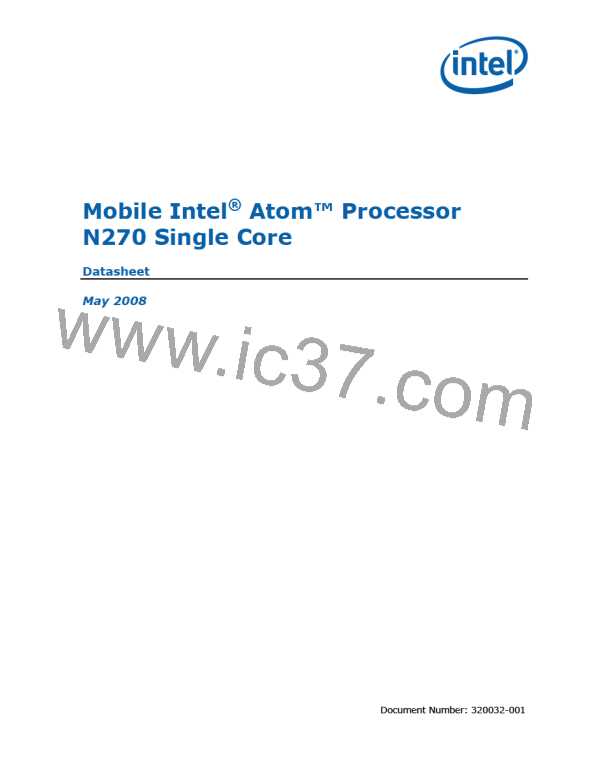Thermal Specifications and Design Considerations
The processor incorporates three methods of monitoring die temperature: the Digital
Thermal Sensor, Intel Thermal Monitor, and the Thermal Diode. The Intel Thermal
Monitor (detailed in Section 5.2) must be used to determine when the maximum
specified processor junction temperature has been reached.
5.1
Thermal Diode
The processor incorporates an on-die PNP transistor whose base emitter junction is
used as a thermal “diode”, with its collector shorted to ground. The thermal diode can
be read by an off-die analog/digital converter (a thermal sensor) located on the
motherboard or a stand-alone measurement kit. The thermal diode may be used to
monitor the die temperature of the processor for thermal management or
instrumentation purposes but is not a reliable indication that the maximum operating
temperature of the processor has been reached. When using the thermal diode, a
temperature offset value must be read from a processor MSR and applied. See
Section 5.2 for more details. See Section 5.3 for thermal diode usage recommendation
when the PROCHOT# signal is not asserted.
The reading of the external thermal sensor (on the motherboard) connected to the
processor thermal diode signals will not necessarily reflect the temperature of the
hottest location on the die. This is due to inaccuracies in the external thermal sensor,
on-die temperature gradients between the location of the thermal diode and the
hottest location on the die, and time based variations in the die temperature
measurement. Time based variations can occur when the sampling rate of the thermal
diode (by the thermal sensor) is slower than the rate at which the TJ temperature can
change.
Offset between the thermal diode based temperature reading and the Intel Thermal
Monitor reading may be characterized using the Intel Thermal Monitor’s Automatic
mode activation of the thermal control circuit. This temperature offset must be taken
into account when using the processor thermal diode to implement power
management events. This offset is different than the diode Toffset value programmed
into the processor Model Specific Register (MSR).
Table 15 and Table 16 provide the diode interface and specifications. Transistor model
parameters shown in Table 16 provide more accurate temperature measurements
when the diode ideality factor is closer to the maximum or minimum limits. Contact
your external sensor supplier for their recommendation. The thermal diode is separate
from the Thermal Monitor’s thermal sensor and cannot be used to predict the behavior
of the Thermal Monitor.
Datasheet
51

 INTEL [ INTEL ]
INTEL [ INTEL ]